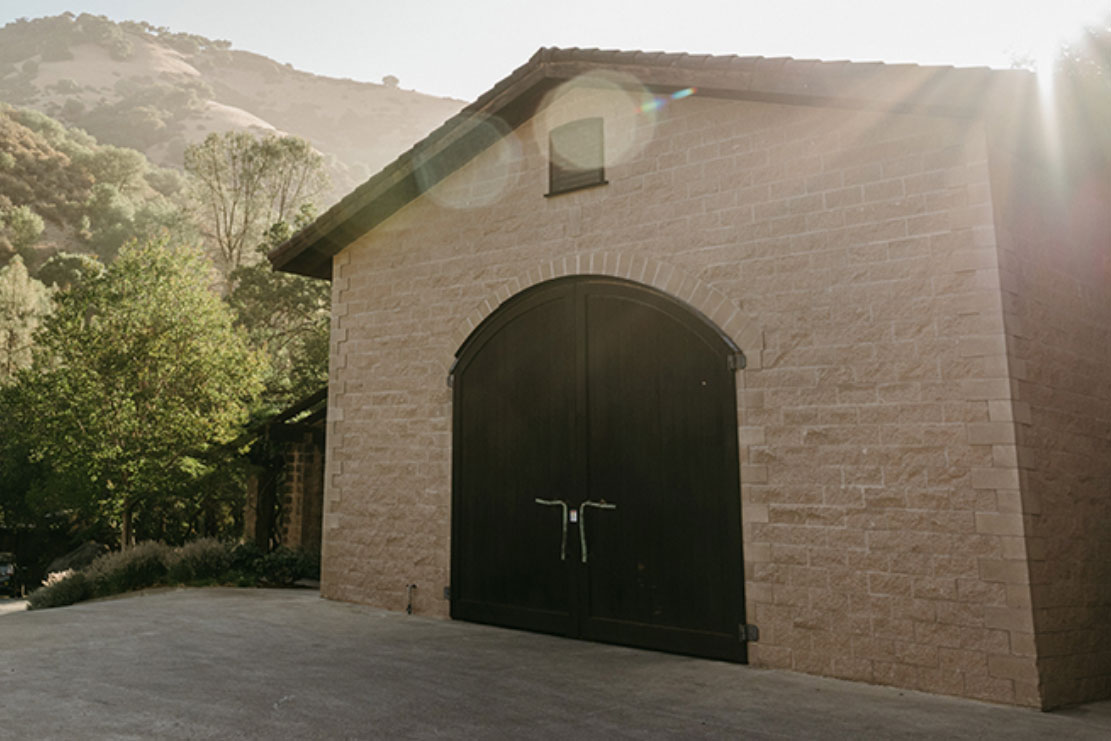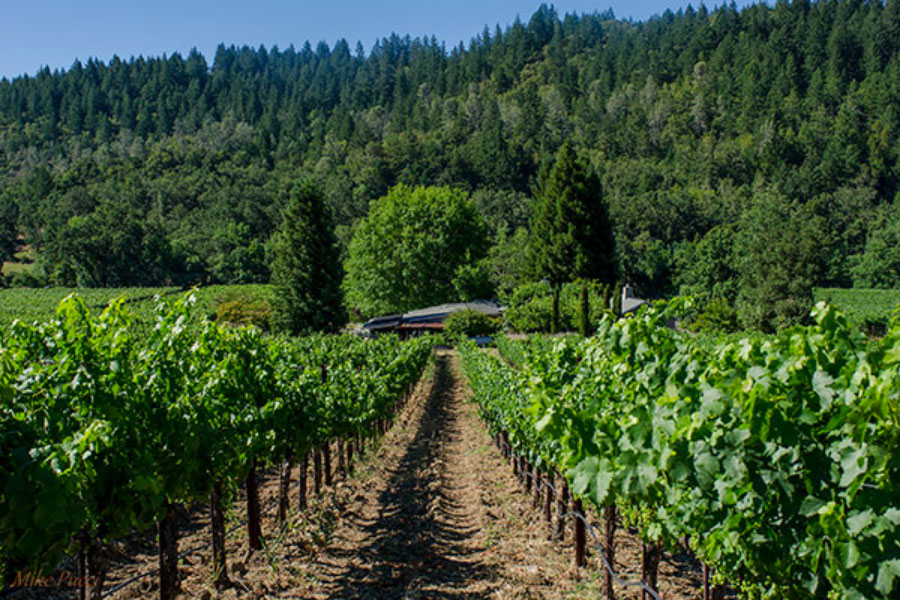Neyers Vineyards About Page
Our Estate

Our estate vineyards, the Conn Valley Ranch, surround our home whereas the Sage Canyon winery and tasting room, are in a different location on Highway 128
Sage Canyon Winery
In the fall of 1999, we purchased a 30-acre parcel in the Sage Canyon area of Napa Valley, a few miles east of Rutherford on Highway 128, near Lake Hennessey. Ehren Jordan oversaw the design and construction of a group of three buildings, which when fully equipped, began our ‘state of the art’ wine production facility. The facility consists of a central processing and fermentation cellar separating the two barrel storage cellars used for red and white barrel aging respectively.

Conn Valley Ranch
The Neyers Ranch home vineyards are located in the hills east of St. Helena, at elevations ranging from 400 to 1200 feet, on a south-facing, 50-acre parcel bisected by Conn Creek. Bruce and Barbara Neyers first saw this property in October 1984 after searching for land to grow Cabernet Sauvignon for over two years. They began development in 1985, including remodeling the house to make it livable. In January 1986 they devised a plan with a supporting local banker to start their grape growing journey (the land didn’t come with vines), beginning with a cattle guard, a deer fence and burying electrical lines.
Barbara was drawn to the property for the space it afforded and today she still gardens and marvels at the sense of freedom she feels at the estate. Initially, and slowly, Bruce and Barbara planted small parcels of Merlot with the help of some former colleagues and Napa Valley friends. Eventually, in 1992 they met famed viticulturist David Abreu. David conceived a plan for Cabernet on the property. The vine spacing is 3’ X 6’, with 2420 vines per acre. They used 420A and 3309 rootstock, then budded with scion material from Abreu’s Thorvilas Vineyard. They’re trained in bilateral cordon, then vertically trellised. The parcel starts at 400 feet elevation, and rises to almost 1000 feet, our highest elevation vines. The slope is 45 degrees in some parts, and faces due south. 3 soil types, gravel, basalt + gravel and loam, sheet of basalt (Ame at highest). The rows run east to west across the face of the slope, so sun exposure is maximized on the south side of the vines. The soil was topped with a thick deposit of Basalt, or compacted volcanic ash.
In late 1998, Bruce & Barbara acted on a long-standing conviction and began to farm these vineyards sustainably. They returned to the time-honored combination of hand and tractor hoeing for weed control. A cover crop of vegetation rich in naturally obtained nutrients is now planted after harvest between vine rows to replace those depleted from the soil. This new, natural habitat encourages the spread of beneficial insects as well. At the same time, we plant a ring of pest-attracting plants around the vineyard to serve as an alternative habitat – an insect ‘buffer zone’ so to speak – for those creatures we want to keep away from the vines. Eliminating the use of pesticides and synthetic fertilizers has done much to alleviate our concerns about long-term soil health and crop viability. At the same time, we have also found that sustainable farming produces richer and more flavorful fruit.
Our current bottlings of Neyers Ranch Cabernet Sauvignon, ÂME Cabernet Sauvignon and Left Bank Red reflect our serious commitment in the vineyard.


